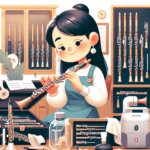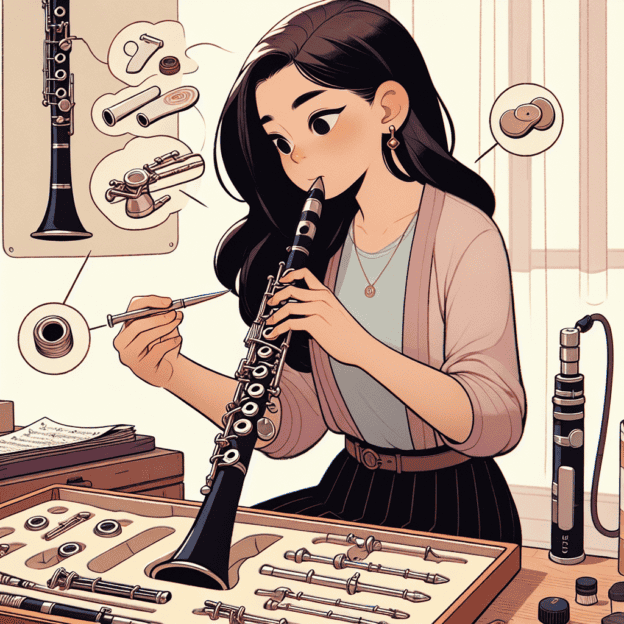Squeaks can be one of the most frustrating issues a clarinet player faces, interrupting your musical experience and drawing unwanted attention during performances. Knowing how to fix a squeaking clarinet is key for maintaining a smooth playing experience. This guide covers common causes of squeaking, solutions to address these issues, and tips to improve your clarinet performance.
Understanding the Causes of Squeaking
To fix a squeaking clarinet, it's helpful to understand what might be causing the sound. Here are several common culprits:
- Reed Issues: The reed is often the main suspect. A damaged, warped, or improperly seated reed can easily cause a squeak. Make sure your reed is in good shape, and always moisten it before playing.
- Pads and Keys: Worn or damaged pads that seal the tone holes can lead to air leaks. This can result in unwanted noise and poor sealing.
- Uneven Airflow: Issues with breath support or airflow can cause the reed to vibrate irregularly, leading to squeaks. Good breath control is key for a smooth sound.
- Mouthpiece Positioning: If the mouthpiece isn't aligned correctly, it can affect how the reed vibrates. Make sure the reed is positioned properly on the mouthpiece.
- Instrument Assembly: If parts aren't lined up well or are forced together when you put your clarinet together, it might cause key problems and squeaks.
| Squeak Cause | Possible Solutions |
|---|---|
| Reed Issues | Replace reed, adjust reed position |
| Pad Problems | Replace or adjust pads |
| Airflow Issues | Practice breath control exercises |
| Mouthpiece Alignment | Adjust mouthpiece position |
| Assembly Problems | Carefully reassemble instrument |
Steps to Troubleshoot and Fix Squeaks
Once you've identified potential causes for the squeaking, follow these troubleshooting steps to address the issue:
- Check the Reed: Look over your reed carefully. Check for damage like chips or cracks. If it's warped or not sealing well on the mouthpiece, get a new one. Try different strengths and brands to find what works best for you.
- Examine the Mouthpiece: Clean your mouthpiece with a brush and warm, soapy water. Make sure the reed is sitting right, lined up with the tip of the mouthpiece. Check that the ligature holds it firmly but not too tight.
- Inspect the Pads: Look at all the pads to make sure they're sealing well. If any look worn or are sticking, think about replacing or adjusting them. This helps the tone holes work right when you play.
- Airflow Check: Think about how you're supporting your breath. Practice long tones, focusing on using your diaphragm for steady air pressure.
- Check Instrument Assembly: Take your clarinet apart and put it back together carefully. Make sure all joints fit well and are clean and dry. Adjust anything that's not lining up right.
Preventative Measures
To avoid future squeaks, try these helpful tips:
- Regular Maintenance: Set up a cleaning routine for your clarinet. Swab out moisture after playing, clean the mouthpiece, and check your reeds and pads often.
- Use Good Materials: Buy high-quality reeds and ligatures. They can really improve your sound and cut down on squeaks. Brands like Martin Freres make great products that can make your clarinet playing better overall.
- Practice Good Breathing: Work on breath control exercises to improve your airflow. Regular practice will help your tone stay consistent and reduce squeaking.
Common Misconceptions
When dealing with squeaking clarinets, there are a few wrong ideas that could lead to unnecessary frustration:
- Blaming the Instrument: Many players think their clarinet is the problem. Usually, the real issue is poor maintenance, a bad reed, or how the player is using the instrument.
- Thinking All Squeaks are Bad: Some squeaks might point to bigger problems, but others could just be from temporary things like moisture or parts not lining up right for a moment. It's important to look at each situation carefully before deciding it's a problem with your instrument.
Expert Help
If you're still having trouble with squeaks after trying these tips, it's okay to ask for help. Clarinet repair experts can find and fix problems quickly, making sure your instrument is in great shape to play. A good repair person knows how to handle specific clarinet issues and can show you how to take care of your instrument going forward.
As a clarinet player, knowing how to fix squeaks can make playing much more enjoyable. By taking good care of your equipment, using quality reeds, and working on your breathing techniques, you can have a smoother, more fun time making music. Learning about your clarinet and how it works won't just make you play better – it'll make you love music even more.







